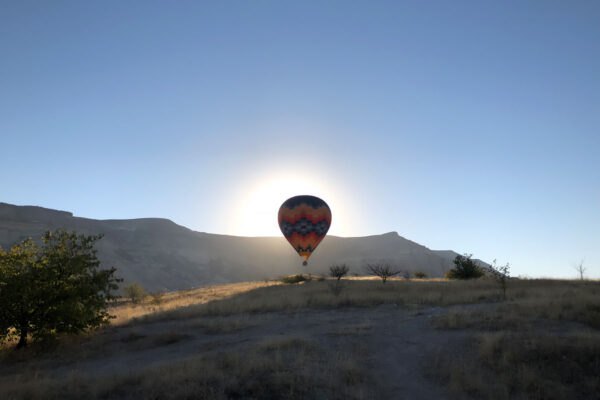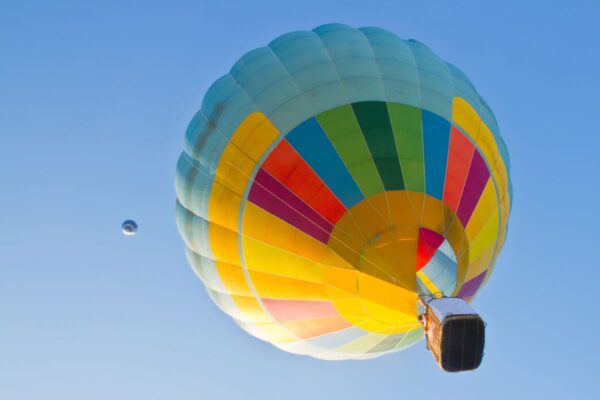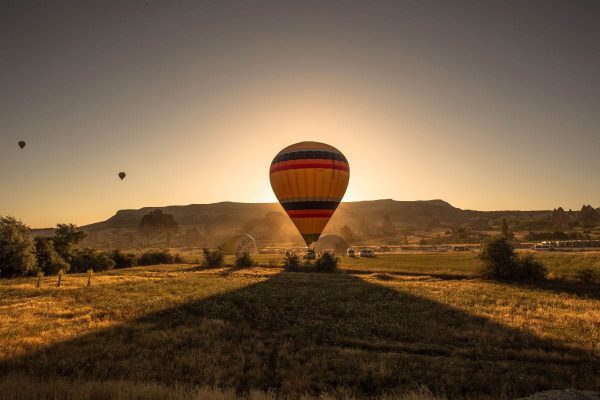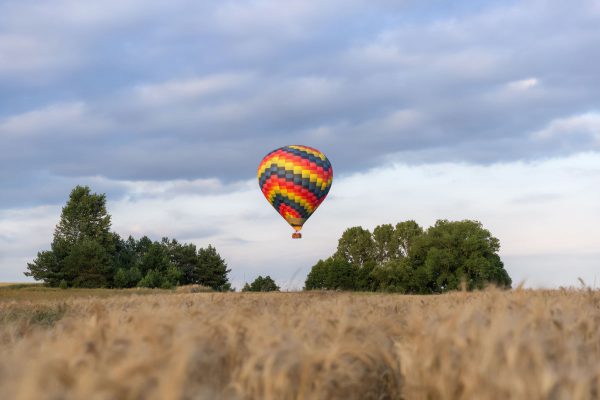Fear of balloon flight affects many people and can significantly impact their lives and travel plans. This fear often stems from deep concerns related to heights, lack of control over the situation, or unpredictability of weather conditions. Understanding the causes of this fear is the first step in effectively supporting a loved one.
Supporting a person with fear of balloon flight requires patience, empathy, and a systematic approach. Proper emotional and practical preparation can greatly reduce stress levels and help overcome the psychological barrier. Effective support techniques include gradually familiarizing with the idea of air travel, learning relaxation techniques, and building trust through education about balloon flight safety.
Understanding the causes of fear of balloon flight
Fear of balloon flight has a complex psychological basis and often results from a combination of various factors. Identifying specific causes of fear allows for better understanding of the person’s needs and tailoring appropriate support strategies.
The most common fears related to hot air balloon travel
Acrophobia, or fear of heights, affects over 7% of humanity and is the main cause of fear of balloon flight. People with this condition experience intense physical reactions such as dizziness, rapid heartbeat, and panic attacks. Fear of lack of control over the situation intensifies anxiety because the balloon moves according to air currents.
Safety concerns often stem from incomplete information about balloon technology. Many people are unaware of the high safety standards applied in balloon aviation. Fear of open flame in the burner can cause additional anxiety. The unpredictability of weather conditions and possible flight cancellations also generate stress.
The most commonly reported fears include:
- Fear of heights and falling
- Anxiety related to lack of control over the flight
- Concerns about the safety of the balloon’s structure
- Fear of unpredictable weather conditions
- Fear of emergency landing
Most fears related to balloon flight are based on myths and false beliefs spread by media or people without proper knowledge. Modern balloon technology far exceeds standards from several decades ago, and regular inspections and pilot training ensure the highest level of safety. Education about actual risks and safety procedures helps approach risk rationally and reduces unwarranted fears.
Psychological mechanisms behind fear of heights
Fear of heights has deep evolutionary roots and served as protection against dangers. Today, these protective mechanisms can be overly activated, causing paralyzing fear. The brain measures vertical distance by observing shrinking objects, which triggers a fear response. The nervous system reacts automatically, preparing the body for fight or flight.
Catastrophizing involves imagining the worst possible scenarios during a flight. People with a fear of heights often create mental images of aviation disasters. Misconceptions about the safety of balloons can be reinforced by the media or stories from others. Excessive generalization causes isolated accident cases to be perceived as common threats.
Learned anxiety behaviors may originate from childhood or earlier traumatic experiences. Observing anxious reactions in parents or caregivers can shape one’s own response patterns. Social reinforcement of fear through comments from others deepens anxiety. The lack of positive experiences related to heights makes it difficult to overcome negative associations.
Differences Between Fear of Airplane Flying and Balloon Flying
Fear of flying in an airplane often focuses on mechanical aspects of the flight and turbulence. Airplanes move at high speeds and make sudden movements, which can intensify feelings of fear. Passengers have no insight into the pilot’s work or control over the flight’s progress. The enclosed cabin may trigger claustrophobia in some individuals.
Balloon flights are characterized by calm, smooth movement without vibrations or sudden changes in direction. The balloon moves at wind speed, eliminating the sensation of speed. The open basket provides full visibility and contact with the surroundings. The pilot is present in the same basket, which increases the sense of security.
Distinctive differences in flight experience:
- Smooth balloon movement vs. airplane turbulence
- Open space vs. enclosed cabin
- Slow movement vs. high speed
- Direct contact with the pilot vs. isolated crew
- Quiet flight vs. engine noise
The anxiety mechanism in ballooning may be milder due to the lack of vertical reference points. The brain does not detect a central distance point, focusing instead on the horizontal landscape. Gradual ascent allows for acclimation to height. The ability to observe the balloon control process increases the sense of control over the situation.
Practical Ways to Prepare for a Balloon Flight
Systematic preparation for a balloon flight significantly increases the chances of a positive experience. The adaptation process requires time and a patient approach. Gradually building trust through education and practical activities helps overcome fear.
Gradual Acclimation to the Idea of Air Travel
Planning a flight several months in advance allows for slow mental preparation. Initially, one can talk about the flight positively, focusing on beautiful views and a unique experience. Watching videos of balloon flights helps visually familiarize oneself with the situation. Reading positive reviews and opinions from other passengers builds trust in safety.
Gradual exposure to heights can begin with visits to tall buildings with elevators. Walking on bridges or observation towers helps adapt to perspectives from above. Riding cable cars or mountain railways can be another stage of acclimation. Every positive experience related to heights strengthens self-confidence.
Stages of gradual acclimation:
- Conversations about the positive aspects of flying
- Watching educational materials about balloons
- Visits to tall buildings with a secure barrier
- Walks on bridges and observation points
- Participation in other high-altitude activities
It is important to start with the least stressful situations and gradually move to more demanding ones. Each stage should be positively reinforced by accompanying persons. Do not force progression to the next level if the previous one has not been fully accepted. Regular repetition of positive experiences solidifies new response patterns.
Visit to the launch site before the planned flight
Personally getting to know the balloon launch site significantly reduces anxiety related to unfamiliar surroundings. You can observe the process of preparing the balloon for flight and learn about the safety equipment. Meeting the pilot and asking questions about procedures increases trust in the crew’s professionalism. Seeing the balloon’s gondola up close helps in understanding its construction and safety.
The visit allows practical familiarization with safety procedures. You can check what entering the gondola looks like and what clothing requirements there are. Observing other passengers preparing for flight shows the normalcy of the entire process. Taking photos of the launch site can serve as a positive reminder before the actual flight.
During the visit, it is worth paying attention to the crew’s professional approach and high safety standards. You can meet ground crew members and learn about their roles in the whole process. Checking local conditions such as parking or restrooms eliminates additional sources of stress. Planning your route and arrival time for the flight reduces logistical anxiety.
Conversation with the balloon pilot about safety
A direct conversation with an experienced pilot provides reliable information about flight safety. The pilot can explain emergency procedures and safety statistics in balloon aviation. Learning about the pilot’s qualifications and experience builds trust in their competence. The opportunity to ask detailed questions allows specific concerns to be addressed.
The pilot may present certificates and licenses confirming their qualifications. Stories about previous flights and experiences with various passengers normalize the situation. Explaining differences between balloon flight and other forms of air transport helps in understanding its specifics. Information about regular technical inspections of the balloon increases feelings of safety.
Key topics to discuss with the pilot:
- Pilot’s experience and qualifications
- Safety procedures during flight
- Accident statistics in balloon aviation
- Emergency systems and rescue equipment
- The impact of weather conditions on safety
It is advisable to ask the pilot for a demonstration of basic safety equipment and an explanation of its functions. Talking about a typical course of flight helps mentally prepare for the experience. The pilot may share techniques that help nervous passengers cope with stress. Establishing communication signals between pilot and passenger increases a sense of control.
Choosing the Right Day and Weather Conditions
Optimal weather conditions significantly affect the comfort and safety of a balloon flight. Calm, sunny days with gentle winds provide the best conditions for beginner passengers. Avoiding flights on days with forecasted precipitation or strong winds increases the likelihood of a positive experience. Air temperature influences flight stability and passenger comfort.
Morning hours typically feature the most stable atmospheric conditions. Thermals and turbulence are minimal in the early hours of the day. Visibility is often best in the morning due to clear air. The temperature is pleasant, which enhances comfort during the flight.
Flexibility in scheduling allows for choosing optimal conditions. Balloon companies often offer alternative dates in case of unfavorable weather. Understanding that safety takes priority over scheduling builds trust in the operator’s professionalism. The ability to reschedule a flight for a better day reduces pressure and stress.
Tip: Choosing a calm, sunny day with minimal wind and morning launch times greatly increases comfort for a first balloon flight for someone with a fear of heights.
Relaxation and Breathing Techniques During Preparations
Mastering effective relaxation techniques is a key part of preparing for a balloon flight. Regular practice of these methods before the planned flight increases their effectiveness in stressful situations. Breathing and relaxation techniques help control physical reactions related to anxiety.
Breathing Exercises to Reduce Tension
Box breathing involves rhythmically controlling breath in a four-second cycle. The technique includes inhaling through the nose for four seconds, holding the breath for four seconds, exhaling through the mouth for six seconds, and pausing for four seconds. Regular practice of this method calms the nervous system and restores emotional balance. The exercise can be done anywhere at any time.
Deep abdominal breathing activates the parasympathetic system, which is responsible for relaxation and recovery. Placing one hand on the chest and the other on the abdomen helps control proper technique. During inhalation, the abdomen should rise more than the chest. Exhalation should be longer than inhalation, which intensifies the calming effect.
Effective breathing techniques:
- 4-4-6-4 breathing (inhale-hold-exhale-pause)
- Deep abdominal breathing
- Breathing with extended exhale
- Synchronous breathing with visualization
- Counting backward breathing
Breathing exercises before sleep improve rest quality and reduce nighttime anxiety. Practicing during daily activities reinforces technique and increases automaticity. Combining breathing with positive visualization enhances relaxation effects. Regular practice over several weeks before the flight builds confidence in the method’s effectiveness.
Progressive Muscle Relaxation Before Flight
Jacobson’s progressive muscle relaxation involves consciously tensing and relaxing specific muscle groups. The technique starts from the feet and gradually covers the entire body up to the facial muscles. Each muscle group is tensed for five seconds and then relaxed for ten seconds. The contrast between tension and relaxation helps recognize the difference and achieve deep relaxation.
The method helps release physical tension accumulated in the body during stress. Regular practice increases body awareness and the ability to control muscle tension. The technique can be performed lying down or sitting, adapting to available conditions. A session usually lasts 15-20 minutes and should be conducted in a calm environment.
The initial exercise requires focusing on feeling the difference between tension and relaxation. Over time, the body learns to enter a relaxed state more quickly without needing to tense muscles. The technique is especially effective in reducing physical symptoms of anxiety, such as trembling or stiffness. Combining it with relaxing music or nature sounds enhances the exercise’s effectiveness.
Visualization of Positive Travel Scenarios
The visualization technique involves mentally replaying a positive hot air balloon flight experience. Vividly imagining each stage of the journey, from arriving at the launch site to landing, builds positive associations. Visualization should engage all senses—sights, sounds, smells, and tactile sensations. Regularly repeating mental images increases familiarity with the situation and reduces fear of the unknown.
Imagining spectacular views from above helps focus on the positive aspects of the flight. Mentally rehearsing calm behavior during different flight phases builds confidence. Visualizing a successful landing and satisfaction from overcoming fear motivates taking on the challenge. Including supportive people in visualization increases feelings of safety.
The exercise is best done in a quiet environment, with eyes closed and in a comfortable position. Initially, visualization may last 5-10 minutes, gradually extending to 15-20 minutes. It is important to focus on positive emotions and sensations during the mental journey. If negative images arise, gently redirect attention to positive aspects.
Mindfulness as a Way to Control Thoughts
Mindfulness helps observe thoughts and emotions without judging or fighting them. The technique teaches acceptance of present feelings and focusing on the current moment instead of future threats. Regular mindfulness practice increases stress resilience and improves emotional control. The method is particularly effective in interrupting spirals of negative thoughts typical of anxiety.
Mindfulness exercises can begin by focusing on breathing and current bodily sensations. Observing thoughts as passing clouds helps distance oneself from anxious content. The grounding technique of naming five things you see, hear, and feel breaks panic attacks. Mindfulness requires no special place or time; it can be practiced anytime.
Basic Mindfulness Techniques:
- Focus on breathing and present sensations
- Observing thoughts without judging them
- Anchoring in the present through the senses
- Body awareness meditation
- Mindful execution of daily activities
Mobile apps with guided meditations make learning mindfulness techniques easier. Short, daily sessions lasting five to ten minutes are more effective than infrequent, long exercises. Practicing in various situations increases flexibility in applying the techniques. Combining mindfulness with other relaxation methods enhances the overall calming effect.
Tip: Regular practice of relaxation techniques for at least two weeks before the flight significantly increases their effectiveness in stressful situations.
Emotional support on the day of the flight
The day of the flight is a crucial moment when all previous preparations come into play. Proper emotional support can determine the success of the entire endeavor. The presence of close people and the use of proven psychological strategies significantly affect stress levels and passenger comfort.
The presence of a companion throughout the entire process
Support from a trusted person during a balloon flight has great psychological importance for people with acrophobia. The companion can serve as a stabilizing influence, helping maintain calm and focus on positive aspects of the experience. The physical presence of a close person reduces feelings of isolation and increases a sense of security. The ability to hold hands or receive words of encouragement during difficult moments serves as a natural support mechanism.
The companion should be informed beforehand about support techniques and ways to respond in crisis situations. It is important that the supporting person remains calm and positive, not transmitting any personal stress. Participating together in flight preparations builds a sense of shared experience. The companion can also document positive moments during the flight, creating lasting memories of overcoming fear.
Choosing the right companion is key to the success of the entire endeavor. It should be someone who radiates calmness, has a positive attitude, and can remain patient in stressful situations. Discussing roles and expectations beforehand helps prepare effective support. The companion can also act as a liaison with the pilot, asking questions and receiving information on behalf of the nervous person.
Positive conversations and distraction from worries
The technique of redirecting attention involves focusing on positive aspects of the experience rather than potential dangers. Conversations about spectacular views, the uniqueness of the experience, and pride in overcoming fear motivate perseverance. Talking about plans after the flight or sharing previous successes builds a positive mindset. Humor and light joking can relieve tension but care should be taken not to minimize the person’s fears.
Asking open-ended questions about feelings and emotions helps verbalize fear and tame it. Observing the flight preparations together and commenting on the process distracts from negative thoughts. Reminding about previous preparations and mastered relaxation techniques increases the sense of control. Focusing on breathing and mindfulness techniques at key moments helps maintain calm.
Effective conversation strategies:
- Focusing on the positive aspects of the adventure
- Reminding about past successes
- Planning post-flight activities together
- Asking about current feelings
- Gently introducing elements of humor
It is important to adjust the conversation style to the person’s current emotional state. In moments of intense stress, quiet support and focus on breathing techniques may be better. When tension decreases, more active conversations and observations of the surroundings can be introduced. Avoiding comparisons with other forms of transportation or previous negative experiences prevents increasing anxiety.
Small rituals that boost confidence
Creating personal safety rituals helps build a sense of control over the situation. This could be carrying a lucky item, performing a specific breathing sequence, or repeating positive affirmations. Rituals act as psychological anchors, providing familiarity in a new situation. It is important that rituals are simple, practical, and possible to perform during flight.
Shared rituals with a companion strengthen bonds and a sense of support. This could be a special handshake, taking deep breaths together, or repeating motivating slogans. Photographing key moments before the flight creates positive associations and keepsakes of courage. Listening to favorite music through headphones can serve as a relaxation technique and distraction from stress.
Rituals should be introduced gradually during preparations so they become natural and automatic. Testing the effectiveness of different rituals in everyday stressful situations helps select the most effective ones. It is important that rituals do not become compulsive behaviors but remain flexible support tools. The ability to modify rituals depending on the situation increases their practicality.
Documenting experiences as motivation
Photographing and filming positive moments of the flight serves as evidence of overcoming fear. Documentation creates lasting keepsakes that can be used to build confidence in the future. Photos from various stages of the flight show progress in coping with stress. The opportunity to share success with others increases satisfaction with achievement.
Keeping an emotion journal before, during, and after the flight helps track changes in attitude. Recording positive feelings and discoveries during the flight reinforces positive memories. Documentation can serve as inspiration for others struggling with similar fears. Creating a narrative about courage and overcoming fear strengthens self-esteem and competence.
Planning ways to share the experience on social media can serve as additional motivation. Preparing a short story about overcoming fear inspires others and builds a positive self-image. It is important to document not only the final success but the entire process of preparation and struggles with anxiety. Creating an album or presentation of the whole adventure allows for repeatedly reliving positive emotions.
Tip: Preparing a simple action plan for the day of the flight, including specific support techniques and rituals, significantly increases the sense of control and reduces the unpredictability of the situation.
Professional Balloon Flights with ProBallooning
ProBallooning is a company specializing in extraordinary balloon flight experiences across Poland. Their services are aimed at people seeking adventure and new memories high above the ground. Every flight combines safety, comfort, and emotions experienced in the skies.
The ProBallooning team consists of experienced pilots holding air carrier certificates. Regular technical inspections of balloons guarantee a calm experience for every participant. An individual approach to clients allows tailoring the flight to personal expectations and dreams.
Professional Balloon Flights
Balloon flights take place in picturesque areas around Warsaw, Radom, and Łódź. During balloon flights, you can see the landscapes of Mazovia from a new perspective. The Vistula and Pilica rivers winding through green areas create beautiful panoramas.
Various types of balloon flights are available:
- Scenic balloon flights allow you to admire Bolimów Landscape Park and the Castle of Mazovian Dukes in Czersk.
- Private balloon flights offer a unique option for those seeking exclusive adventures.
- Family balloon flights open doors to spending time together among the clouds.
- Engagements in a balloon are an option for couples wanting to celebrate special moments. A balloon flight as a gift is a unique way to surprise a loved one.
Each balloon flight provides a window seat for every participant. Small groups during balloon flights ensure comfort and space. Safety remains a priority throughout the entire journey.
The ProBallooning Company
The founder of ProBallooning is a pilot with over eight years of experience in ballooning. He has completed about five hundred flights, gathering extensive practical experience. He is a member of Poland’s National Team in gas balloon flying.
ProBallooning Company regularly participates in the Polish Cup and World Championships. The goal of ProBallooning is to promote ballooning throughout Poland. The ProBallooning team works with dedication to share this extraordinary adventure.
The ProBallooning team includes a pilot from Brazil, where ballooning has been a family tradition for three decades. Experience gained during competitions from Brazil through Japan and the United States to Australia enriches ProBallooning’s offerings. This international perspective translates into the high quality of balloon flights offered by ProBallooning.
Customer Reviews
People who have taken balloon flights express satisfaction with the professionalism of the team. Participants emphasize the beautiful views during balloon flights and the unique atmosphere. Memories from balloon flights stay with participants for a lifetime.
A balloon flight chosen as a gift brings joy to the recipients. Family balloon flights create unforgettable moments for entire families. Customers recommend the professionalism and commitment of the ProBallooning team on every balloon flight.
Book your balloon flights on the ProBallooning website and contact the team for consultation. The ProBallooning team awaits every interested person eager to experience an unforgettable balloon flight adventure. Get detailed information and choose the perfect balloon flight package tailored to your needs.
Balloon Flight Safety in Numbers and Facts
Objective data about balloon flight safety is a powerful tool in building trust among people with fear of heights. Concrete statistics and facts help in rationally approaching risk and dispel myths related to the dangers of balloon travel.
Accident Statistics in Balloon Aviation
Balloon flights are among the safest forms of air transport according to statistical data from recent years. In Poland, between 2012 and 2021, an average of 1.2 balloon accidents per year were recorded, most of which did not result in serious injuries. The accident rate for balloon flights is 0.01 per million trips, which significantly exceeds the safety of car travel (7.3 accidents per million trips).
Throughout Europe, during 2012-2021, only 6 fatal accidents related to balloon flights were registered. For comparison, during the same period, significantly more accidents were recorded in general and commercial aviation. In the United States in 2021, only 6 balloon accidents were reported, while there were over 38 thousand car accidents.
Comparison of Transport Safety Rates:
| Type of Transport | Accident Rate per 1 Million Trips |
|---|---|
| Balloon Flights | 0.01 |
| Commercial Airplane Flights | 0.07 |
| Car Travel | 7.3 |
| Rail Transport | 0.43 |
Most balloon incidents result from external factors, such as sudden changes in weather conditions. In March 2023, near Nowy Targ, a balloon lifted off again after its first landing due to a sudden gust of wind. Proper safety procedures and adequate pilot training significantly minimize the risk of accidents.
Balloon Pilot Certificates and Licenses
Balloon pilots in Poland must hold appropriate licenses compliant with European EASA (European Aviation Safety Agency) regulations. The basic PPL(B) license requires completing at least 16 hours of flight time, including 10 hours as the balloon commander. The theoretical course covers balloon aerodynamics, equipment handling, flight preparation, and rescue procedures in case of failure.
The professional SPL(B) license requires at least 35 hours of flight time, including 15 hours as commander. Candidates must pass demanding theoretical and practical exams conducted by qualified examiners. Pilots must regularly participate in refresher courses and maintain their qualifications by completing a specified number of flight hours annually.
Requirements for maintaining the license:
- A minimum of 6 flight hours per year as pilot in command
- At least 10 takeoffs and landings within the year
- A training flight with an instructor on a specified type of balloon
- If there is a break longer than 24 months — skills check
Polish balloon pilots often have international experience and participate in sports competitions across various continents. Members of Poland’s National Team in gas ballooning represent the highest skill level in ballooning. Regular training and exchange of experiences with pilots from other countries raise safety standards in Polish ballooning.
Equipment Inspection Procedures Before Each Flight
Every commercial balloon undergoes a detailed technical inspection before each flight according to international safety standards. The checklist includes checking the condition of the balloon envelope, fuel system, burner, navigation instruments, and safety equipment. The pilot inspects all connections, ropes, carabiners, and structural elements of the gondola for damage or wear.
The fuel system inspection includes checking hose tightness, valve functionality, and fuel level indicators. The burner is tested for even combustion and appropriate heating power. Onboard instruments such as altimeters, variometers, and GPS are calibrated and checked for proper operation. Radio communication is tested on various aviation frequencies.
Main elements of pre-flight inspection:
- Condition of the balloon envelope and securing lines
- Functionality of the fuel system and burner
- Calibration of navigation instruments
- Radio communication equipment test
- Completeness of rescue equipment
The balloon’s technical documentation must be up to date and include information about recent inspections and repairs. Airworthiness certificates are required for every commercial balloon and are subject to regular verification by aviation authorities. Spare parts and consumables must come from certified suppliers and meet specified quality standards.
Safety Systems in Modern Balloons
Contemporary balloons are equipped with advanced safety systems that significantly exceed the standards from several decades ago. Class B dry powder fire extinguishers are used to extinguish flammable liquid fires, and automatic shut-off valves activate when a gas leak is detected. ELT emergency transmitters send location signals on frequencies 121.5 MHz and 406 MHz with built-in GPS systems.
Modern materials used in balloon manufacturing feature increased resistance to extreme weather conditions. Ripstop nylon coatings are tear-resistant and withstand significant wind loads. Temperature control systems protect the envelope material from overheating. Repeatedly tested emergency procedures cover various crisis scenarios.
Key safety systems:
| System | Function | Standard |
|---|---|---|
| Powder Fire Extinguishers | Burner Fire Suppression | Class B, reusable |
| ELT Transmitters | Emergency Location | GPS + frequencies 121.5/406 MHz |
| First Aid Kit | Medical Assistance | Compliant with EU regulations |
| Emergency Radio | Rescue Communication | VHF + emergency frequencies |
Regular technical inspections conducted by certified aviation mechanics ensure the maintenance of high safety standards. Balloon manufacturing technology is continuously improved based on the latest research and operational experience. Redundancy systems provide alternative solutions in case of primary equipment failure.
Tip: Familiarizing yourself with specific statistical data and safety procedures helps in taking a rational approach to risk and dispelling unfounded fears related to balloon flight.
Summary
Supporting a loved one with a fear of balloon flight requires a holistic approach combining an understanding of the psychological mechanisms of fear, systematic practical preparation, and the use of effective emotional support techniques. It is crucial to recognize that acrophobia affects a significant portion of the population and represents a natural protective reaction of the body that can be effectively managed through appropriate strategies.
The preparation process should be gradual and tailored to the individual needs of the person with fear. Combining education about balloon flight safety with regular practice of relaxation techniques builds a solid foundation of confidence. The presence of a supportive companion and the use of positive communication strategies on the day of the flight can determine the success of the entire endeavor.
Objective statistical data confirm that balloon flights are among the safest forms of air transportation, which is a strong argument in building a rational approach to risk. High pilot training standards, regular technical equipment inspections, and modern safety systems provide optimal passenger protection. With patient support and proper preparation, balloon flight can become a transformative experience in overcoming personal limitations and discovering new possibilities.
Sources:
- https://en.wikipedia.org/wiki/Acrophobia
- https://pl.wikipedia.org/wiki/Akrofobia
- https://www.medicalnewstoday.com/articles/acrophobia
- https://www.healthline.com/health/acrophobia-or-fear-of-heights-symptoms-causes-and-treatment
- https://my.clevelandclinic.org/health/diseases/21956-acrophobia-fear-of-heights
- https://www.verywellmind.com/acrophobia-fear-of-heights-2671677
- https://pmc.ncbi.nlm.nih.gov/articles/PMC4888601/
- https://www.easa.europa.eu/sites/default/files/dfu/Balloon%20Rule%20Book.pdf
- https://www.ballooning-federation.eu/wp-content/uploads/2024/08/EASA_ASR_2024_For_Publication.pdf
- https://www.seguridadaerea.gob.es/en/ambitos/licencias-y-medicina-aeronautica/licencias-al-personal-de-vuelo/licencias-de-piloto-de-globo-bpl
- https://bbac.org/training/
- https://www.caa.co.uk/commercial-industry/pilot-licences/balloons/commercial-pilot-licence-for-balloons/
- https://www.atsb.gov.au/reducing-passenger-injuries-commercial-ballooning-operations
- https://ulc.gov.pl/personel-lotniczy/komisja-egzaminacyjna/wzory-protokolow/balony
- https://edziennik.ulc.gov.pl/DU_ULC/2020/40/akt.pdf
- https://asrs.arc.nasa.gov/publications/directline/dl9_balloon.htm
- https://en.wikipedia.org/wiki/List_of_phobias





